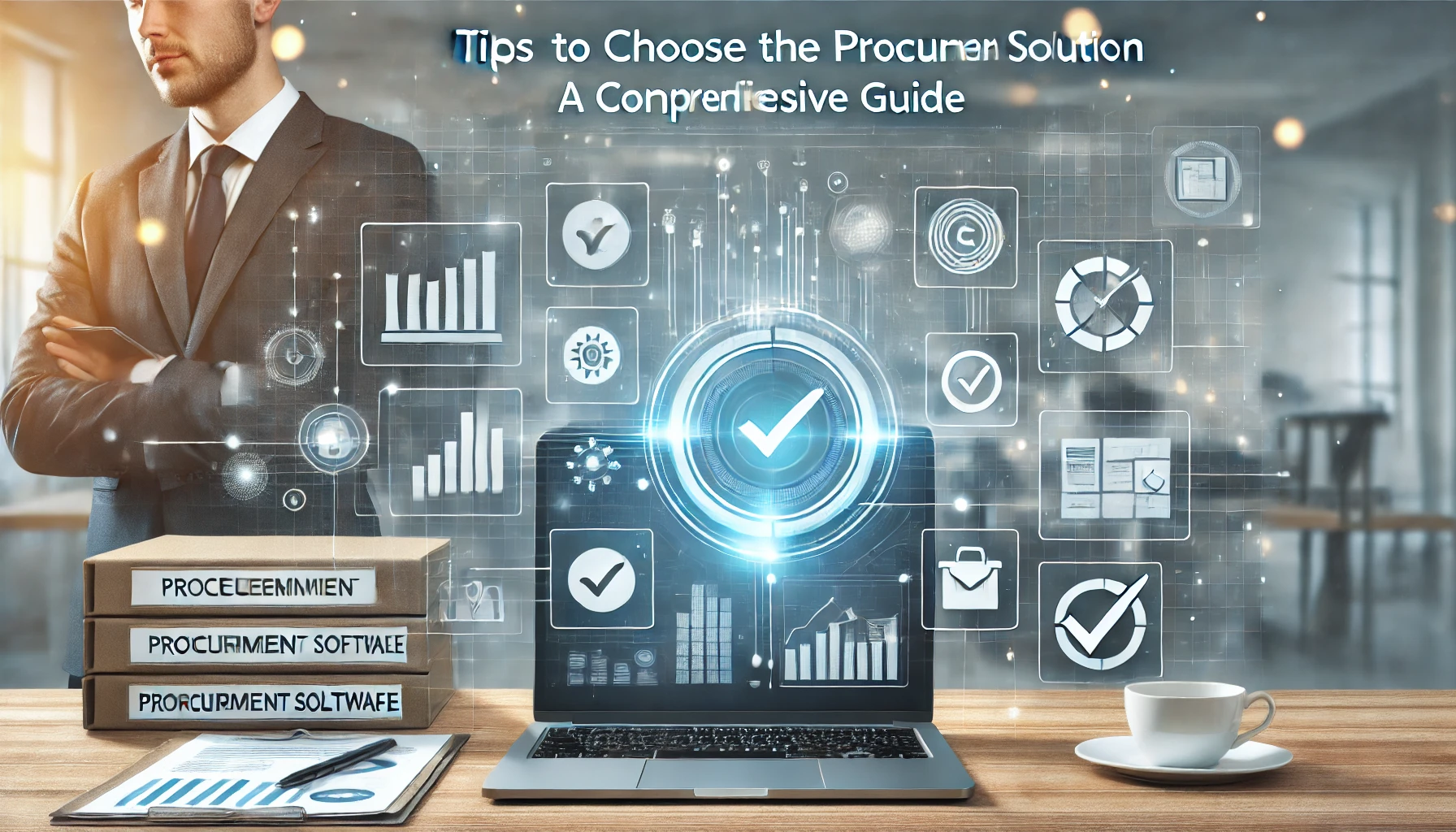Tips to Choose the Best Procurement Solution: A Comprehensive Guide
The decision of the most suitable procurement solution has emerged as critical for organizations of any scale and type within the modern world and its unpredictable business conditions. A good procurement system can enhance the company’s corporate ability, reduce cost, and enhance the processes. Deciding on which one is the right fit for your company, may be challenging, which is why given the vast offer available on the market. Below is this detailed step-by-step guide that will guide you through five core steps to selecting the right procurement solution for your firm.
1. Understanding Your Organization’s Unique Requirements
Before proceeding to the selection process there is a need to conduct a thorough analysis of requirements and challenges your firm may face. First of all, it is suggested to map the current state of procurement activities and figure out all the issues in the existing processes and what should be changed. To ensure that the evaluation is carried out by different people, and all requirements are considered, this evaluation should involve important contributors from different departments, for instance the finance department, the operations department, and the procurement department. Remember that every business is unique and its workflow, and compliance requirements are crucial to be considered here.
Your operations’ size and scope are important factors in deciding the kind of procurement solution you want. While a big organization may require sophisticated functionality like contract management, supplier relationship management, and interaction with current enterprise resource planning (ERP) systems, a small firm may just need simple functions like purchase order management and vendor documentation. Spend some time methodically documenting these needs, ranking them according to how crucial they are to the operations and expansion goals of your company.
2. Evaluating Technical Capabilities and Integration Options
A procurement solution’s technological features can have a big influence on how well it works and how many people utilize it in your company. Start by evaluating the solution’s essential features, including the ability to handle purchase orders, manage invoices, approve processes, and generate reports. These characteristics need to be in line with your stated needs and offer the resources you need to expedite your purchase procedures. Focus especially on the solution’s capacity to automate repetitive processes, since this may result in substantial time savings and a decrease in human error.
Another important technological factor is integration capability. Accounting software, ERP software, and other vital apps should all be easily integrated with your current business systems as part of your procurement solution. By removing the need for human data entry and lowering the possibility of inconsistencies, this connection guarantees seamless data flow across several platforms. Examine if the solution has pre-built connections or standard APIs for popular business apps, and assess the work involved in setting up and maintaining these interfaces.
3. Assessing User Experience and Training Requirements
Any procurement solution’s effective acceptance and execution depend heavily on the user experience. Both infrequent and frequent users should be able to easily use the system thanks to a straightforward and user-friendly interface. Seek out solutions that provide logical workflows that align with the procedures of your company, easily navigable menus, and dashboards that can be customized. Your team is more likely to adopt the system and make use of all of its features to increase procurement efficiency if it is simple to use.
Both the necessary training and the resources for assistance that are available should be taken into account. Your staff will need some training to use even the most user-friendly solution efficiently. Examine the solution provider’s training tools and resources, such as online help documents, video lessons, and user manuals. To assist your company, get the most out of the solution, think about if the supplier provides individualized training sessions, continuous support, and a dedicated customer success team.
4. Comparing Cost Structures and Return on Investment
When choosing a procurement solution, it is essential to comprehend the total cost of ownership (TCO). Take into account implementation costs, modification charges, training needs, and continuing maintenance prices in addition to the original license or subscription payments. While some solutions may demand a bigger initial investment but provide better value over time, others may have a lower upfront cost but higher long-term expenditures. To have a good understanding of the financial ramifications, do a thorough cost study spanning at least three to five years.
It is important to carefully weigh the possible return on investment (ROI) against the overall cost. Benefits including shorter processing times, greater spend visibility, stronger supplier connections, and more compliance are examples of both concrete and intangible advantages. Keep track of particular indicators that you may use to gauge how the solution affects the productivity and financial health of your company. This might involve elements like shorter processing times for purchase orders, lower maverick expenditures, or higher rates of contract compliance.
5. Verifying Vendor Reliability and Support Services
An important consideration in your decision-making process is the solution provider’s stability and dependability. Examine the vendor’s financial standing, industry history, and market presence. Seek out suppliers who have a track record of successfully implementing their services in businesses much like yours. Take into account their dedication to innovation and product development, which shows that they can maintain the solution up to date with changing company needs and technological advancements.
Your experience with the procurement solution might be greatly impacted by the calibre of customer service. If your company is global, assess the vendor’s support infrastructure, including response times, support channels (phone, email, chat), and availability across time zones. Seek out suppliers who give all-inclusive support plans that include routine system upkeep, upgrades, and technical support. Think about if they provide specialized account managers or support staff who can gain a thorough grasp of the requirements of your company.
Conclusion
The operational effectiveness and financial performance of your company can be greatly impacted by your strategic choice of vendor onboarding. A humane decision that adds value to your company for several years may partly be made when you consider factors such as individualized need, technological capability, user friendliness, costing, and dependability of the vendor. As highlighted it is important to remember that the best optimized solution to adopt today also has the flexibility that is needed to support the growth and evolution of your business tomorrow






